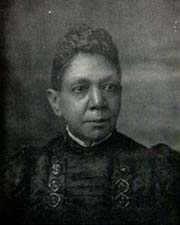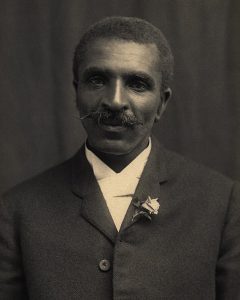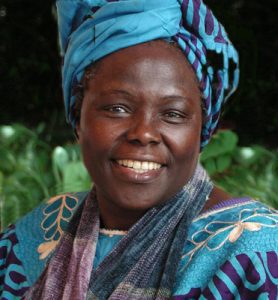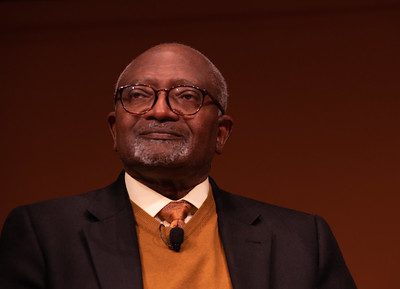Today’s world would look much different without the influence of Black leaders on social, cultural, and natural spaces. This month, we are taking time to honor a few (of the many!) African American individuals who have overcome adversity to make significant contributions towards education and environmental advocacy.
Fanny Jackson Coppin (1837-1913)
 Fanny Jackson Coppin was the first female African American principal in the United States. She was born into slavery but gained freedom through a family member and pursued higher education at Oberlin college. She began teaching by establishing a night school for recently emancipated slaves, and eventually led high school classes at the Institute for Colored Youth. In addition to her passion for education, she was a writer who fought against oppression and advocated for the civil rights movement. Coppin founded homes for women who needed support, and eventually went on as a missionary to counsel African women in Cape Town. Today, Coppin State University is named after her and features a full-ride scholarship with her namesake in honor of her dedication to lifelong learning.
Fanny Jackson Coppin was the first female African American principal in the United States. She was born into slavery but gained freedom through a family member and pursued higher education at Oberlin college. She began teaching by establishing a night school for recently emancipated slaves, and eventually led high school classes at the Institute for Colored Youth. In addition to her passion for education, she was a writer who fought against oppression and advocated for the civil rights movement. Coppin founded homes for women who needed support, and eventually went on as a missionary to counsel African women in Cape Town. Today, Coppin State University is named after her and features a full-ride scholarship with her namesake in honor of her dedication to lifelong learning.
George Washington Carver (1864- 1943)
 George Washington Carver is largely remembered for his innovations in the agriculture industry. After being born into slavery, he went on to earn an Agricultural Science degree in 1894 and a Master’s in 1896. Carver discovered that planting legumes, such as peanuts, would take nitrogen from the air and store it in the soil, which drastically improved soil quality. He was motivated by improving the lives of poor Black rural farmers in the South, and taught people about fertilization, crop rotation, and ways to use unconventional food products. With a growing population and limited amount of fertile land on the planet, this foundational knowledge on how to improve soil quality still has a high level of relevance on sustainability and regenerative agriculture in today’s world.
George Washington Carver is largely remembered for his innovations in the agriculture industry. After being born into slavery, he went on to earn an Agricultural Science degree in 1894 and a Master’s in 1896. Carver discovered that planting legumes, such as peanuts, would take nitrogen from the air and store it in the soil, which drastically improved soil quality. He was motivated by improving the lives of poor Black rural farmers in the South, and taught people about fertilization, crop rotation, and ways to use unconventional food products. With a growing population and limited amount of fertile land on the planet, this foundational knowledge on how to improve soil quality still has a high level of relevance on sustainability and regenerative agriculture in today’s world.
Hattie Carthan (1900-1984)
Hattie “Tree Lady” Carthan was a community activist and environmental leader who became passionate about ending environmental racism when she moved to a red-lined area in Brooklyn, NY. Watching as nearly all the trees disappeared within a decade and city planners had no intention of restoring the space, she took matters into her own hands. Garnering the support of city officials, community members, and other organizations, Carthan lead the efforts to revitalize the livability of urban neighborhoods in NYC. She led the planting of more than 1,500 trees in a 100-block area around Brooklyn. After saving a 40 ft magnolia tree from being bulldozed for a housing development, she petitioned the city to protect it as a Historical Landmark and created an entire environmental education center on the land, Magnolia Tree Earth Center, which stands alongside the original magnolia tree today.
MaVynee Betsch (1935-2005): “The Beach Lady”
At 40 years old, MaVynee Betsch left a career as an opera singer to return home to the shores of American Beach in Eastern Florida. She would dedicate her life to protecting the beach that her great-grandfather started as a resort for Black families during the Jim Crow era. To prevent its destruction and development after years of neglect, Betsch partnered with local environmental organizations to raise awareness about American Beach and its ecological and cultural importance. She donated her life’s earnings, nearly $750,000, to environmental charities. Eventually, American Beach was added to the National Register of Historic Places, and Betsch is outlived by a historic museum that opened after her death.
Dr. Wangari Maathai (1940-2011)
 Dr. Wangari Maathai was a professor, writer, and environmental activist who was widely recognized for her dedicated efforts to uplift communities and their environments from poverty and conflict. After becoming one of the first women in Africa to earn her doctoral degree, she became active with women’s rights groups and founded the Green Belt movement. This initiative focused on community-based tree planting to enhance economic and environmental sustainability. She became the first African woman to win a Nobel Peace Prize in 2004 and was heavily involved with supporting non-profits, conservation funds, and the UN. Her legacy lives on with the Wangari Maathai Institute for Peace and Environmental Studies.
Dr. Wangari Maathai was a professor, writer, and environmental activist who was widely recognized for her dedicated efforts to uplift communities and their environments from poverty and conflict. After becoming one of the first women in Africa to earn her doctoral degree, she became active with women’s rights groups and founded the Green Belt movement. This initiative focused on community-based tree planting to enhance economic and environmental sustainability. She became the first African woman to win a Nobel Peace Prize in 2004 and was heavily involved with supporting non-profits, conservation funds, and the UN. Her legacy lives on with the Wangari Maathai Institute for Peace and Environmental Studies.
Carlotta Walls LaNier (1942-present)
Carlotta Walls LaNier was famously the youngest of nine students who integrated into Little Rock High School after Brown vs. Board of Education (1954) ruled segregation in schools unconstitutional. LaNier recalls that originally, many more students were supposed to show up that day. Despite being the youngest and outnumbered by her peers, LaNier and the “Little Rock Nine” students showed a level of bravery and commitment to education which was unprecedented. Still, she faced harassment, threats, and even the bombing of her home four months before graduation. She wrote about her experiences in her book, A Mighty Long Way: My Journey to Justice at Little Rock Central High. Through this narrative, LaNier reminds and inspires us to think deeply about equity, inclusion, and the structure of educational, and other, social systems.
Dr. John Francis (1946-present): “Planetwalker”
Dr. John “Planetwalker” Francis earned his nickname by avoiding the use of motorized transportation for 22 years after witnessing an oil spill in San Francisco Bay in 1971. His activism started as a silent protest for environmental causes, but he quickly realized his efforts must expand to include connections of humans to each other and nature. He became National Geographic Society’s first Education Fellow in 2010 and his organization Planet Walk aims to educate people about social and environmental connections. Even today, at age 78, he is still leading planet walks with groups of activists worldwide, collecting scientific and societal data for education and environmental awareness.
Dr. Robert Bullard (1947-present): Father of Social & Environmental Justice
 Dr. Robert Bullard is known as the Father of Environmental Justice, dedicating his life to researching and raising awareness about the disproportionate impacts of climate change on under-resourced and minority communities. In the 1970s he began collecting data on the relationship to race and environmental pollution. His first published paper showed that in Houston, despite Black people making up only 25% of the population, 82% lived in close proximity to a landfill, incinerator, or solid waste site. Today, we know that Black Americans suffer from some of the highest rates of cancer and asthma. Dr. Bullard knows that the work to fight for environmental justice is far from over, which is one reason he founded the Bullard Center for Environmental and Climate Justice.
Dr. Robert Bullard is known as the Father of Environmental Justice, dedicating his life to researching and raising awareness about the disproportionate impacts of climate change on under-resourced and minority communities. In the 1970s he began collecting data on the relationship to race and environmental pollution. His first published paper showed that in Houston, despite Black people making up only 25% of the population, 82% lived in close proximity to a landfill, incinerator, or solid waste site. Today, we know that Black Americans suffer from some of the highest rates of cancer and asthma. Dr. Bullard knows that the work to fight for environmental justice is far from over, which is one reason he founded the Bullard Center for Environmental and Climate Justice.
Dr. Beverly Wright (? – present)
Growing up in New Orleans, Dr. Beverly Wright’s view of the world was shaped by witnessing and experiencing the harmful effects of Cancer Alley’s pollution firsthand. This inspired her to tackle these issues with a community-based approach, partnering with well-resourced universities to merge the community narrative with science and research, advocating for policy change and action. Dr. Wright has since founded the first environmental justice center in the U.S., published many scholarly articles and books, serves on numerous boards and committees, and has been recognized with many prestigious awards for her work.
Celebrating Black Environmental Heroes
These heroes and sheroes of the past and present have overcome many inequalities to persevere for the cause of human and environmental rights. We are grateful for their courage, bravery, and resilience that inspire us to act on our passions and stand up for our values. Despite the efforts of many dedicated individuals, racism still exists today systemically through many explicit and implicit biases. With this month and every month, we must remember to actively engage within our communities to continue conversations and actions around equity, inclusion, and justice.
Image credits: Fanny Jackson Coppin (See page for author, Public domain, via Wikimedia Commons); Goerge Washington Carver (By Adam Cuerden – Tuskegee University Archives/Museum, Public Domain, via Wikimedia Commons); Dr. Wangari Maathai (Wangari Maathai by Oregon State University is licensed under CC BY-SA 2.0); Dr. Robert Bullard (Michigan Environmental Justice Summit by University of Michigan School for Environment and Sustainability is licensed under CC BY 2.0)


